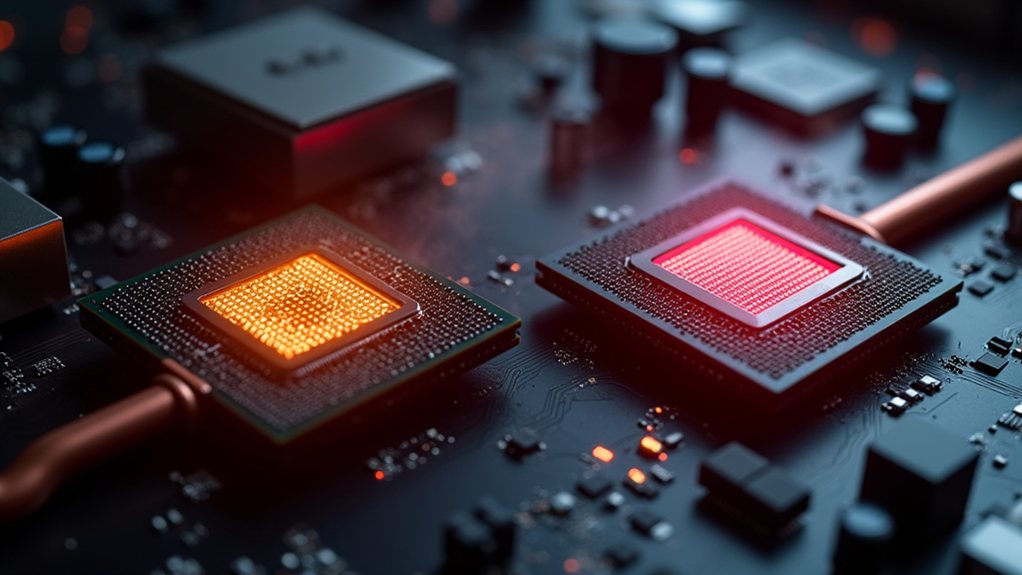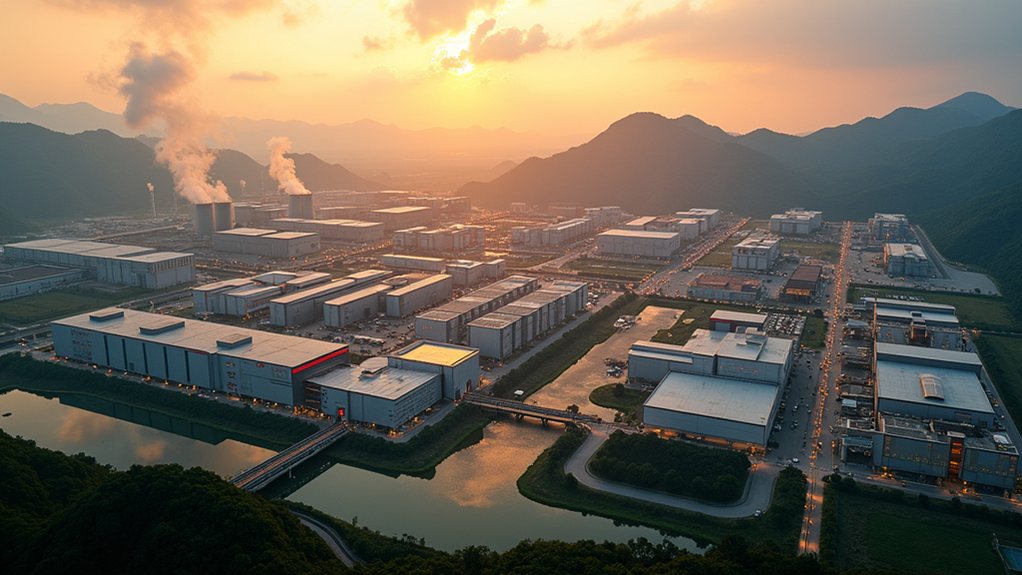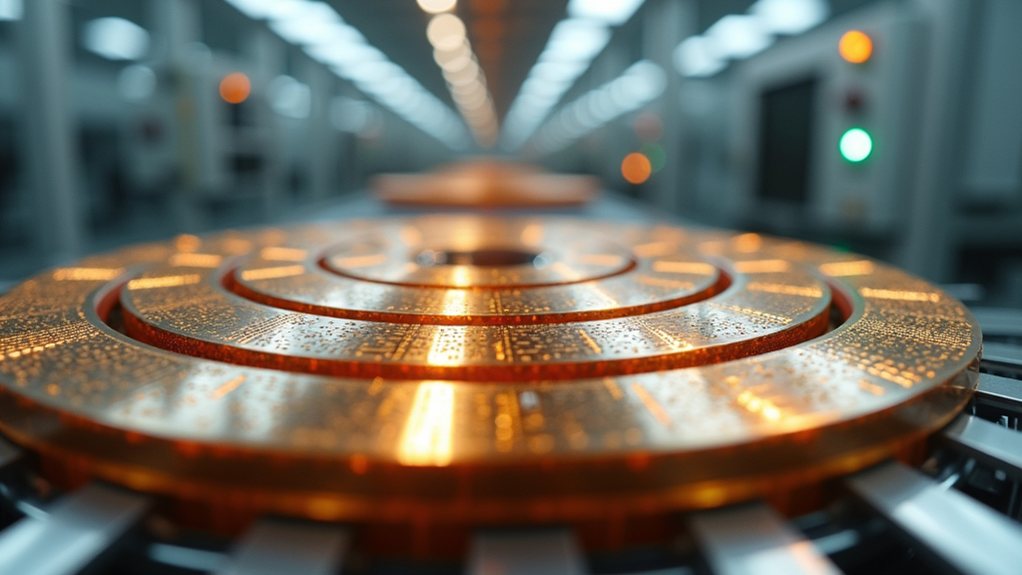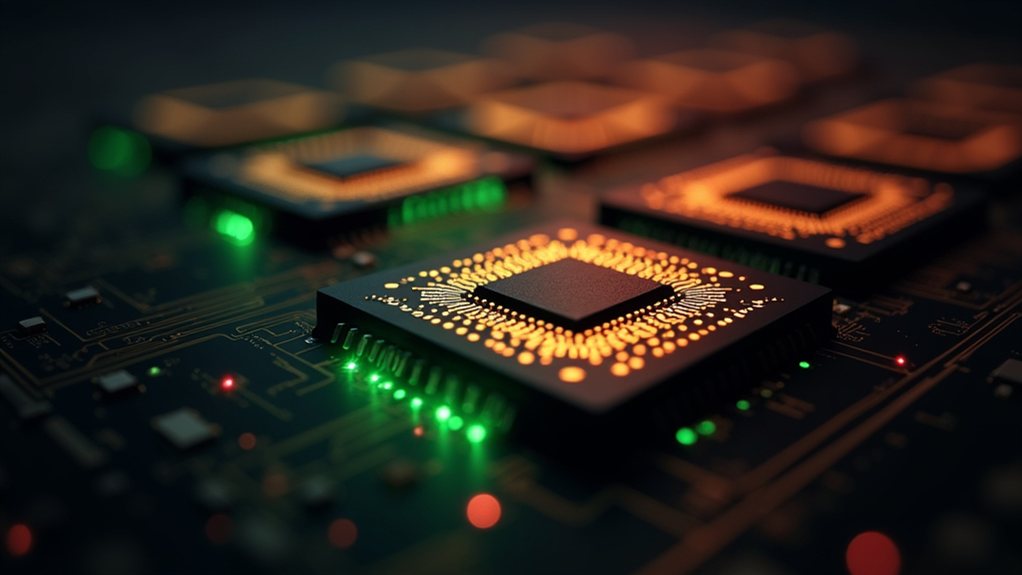In the fierce arena of AI chips, it’s a showdown between the new kid on the block and the seasoned heavyweight. On one side, you have Huawei and its CloudMatrix 384 Supernode boasting a jaw-dropping 300 petaflops of power. That’s right, 300! In comparison, Nvidia‘s NVL72 barely hits 180 petaflops. Ouch.
And let’s not forget Huawei’s Ascend 910B, which claims to be just as good as Nvidia’s A100 for training large AI models. Sometimes even better—20% better on a good day. Huawei’s chips are built on their own proprietary architectures, like the Da Vinci platform. It’s impressive, but with great power comes… some pretty annoying speed and stability issues. Performance issues can really hinder their competitiveness with Nvidia’s reliable GPU systems. They’re trying.
Supporting various AI workloads, Huawei’s chips can handle natural language processing, computer vision, predictive analytics, and probably even your morning coffee—if only. Domestically, Huawei is riding high. Thanks to export restrictions on Nvidia products, they’re snagging a hefty share in China. But globally? Nvidia has a stranglehold. Its H100 GPU is the gold standard, widely regarded as a benchmark for performance. Direct liquid cooling systems are essential for managing the intense heat generated by these powerful chips. It’s tough to overcome that kind of presence. The recent launch of Huawei’s CloudMatrix 384 Supernode underscores their ambition to challenge established leaders in the market.
And speaking of performance, Huawei’s Ascend 910C isn’t slouching either. It delivers dynamic power with up to 320 TFLOPS of FP16 performance, claiming to be more efficient than the A100. Still, can efficiency outrun Nvidia’s established NVLink technology? That’s a big ask.
Huawei’s trying to build its own AI ecosystem. Their MindSpore framework supports TensorFlow and PyTorch. But let’s face it, smashing Nvidia’s beloved CUDA platform seems like an uphill battle. With the U.S. breathing down Nvidia’s neck regarding export controls, it’s anyone’s game. Will Huawei take the crown, or is it just wishful thinking? The chips are down, and this race is heating up.









